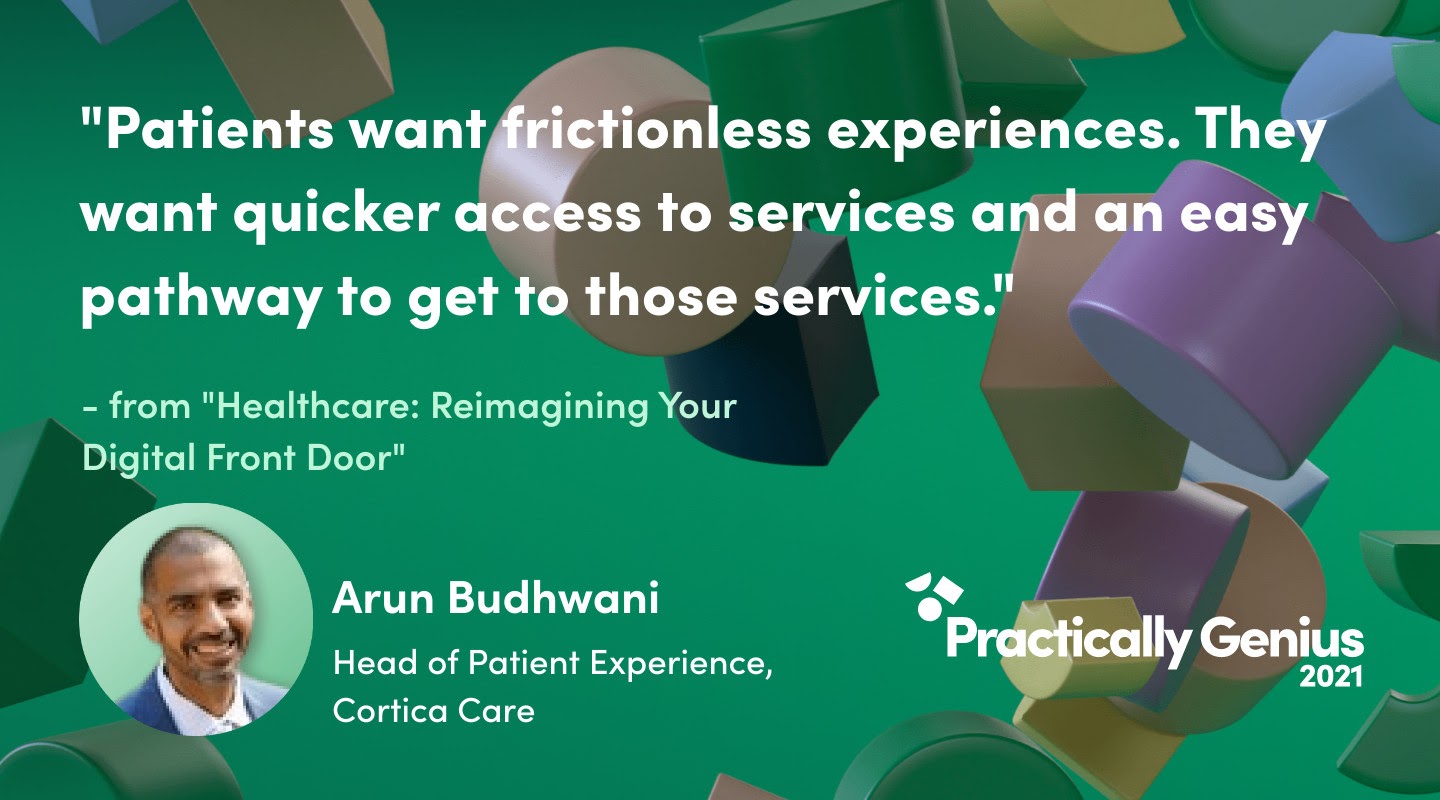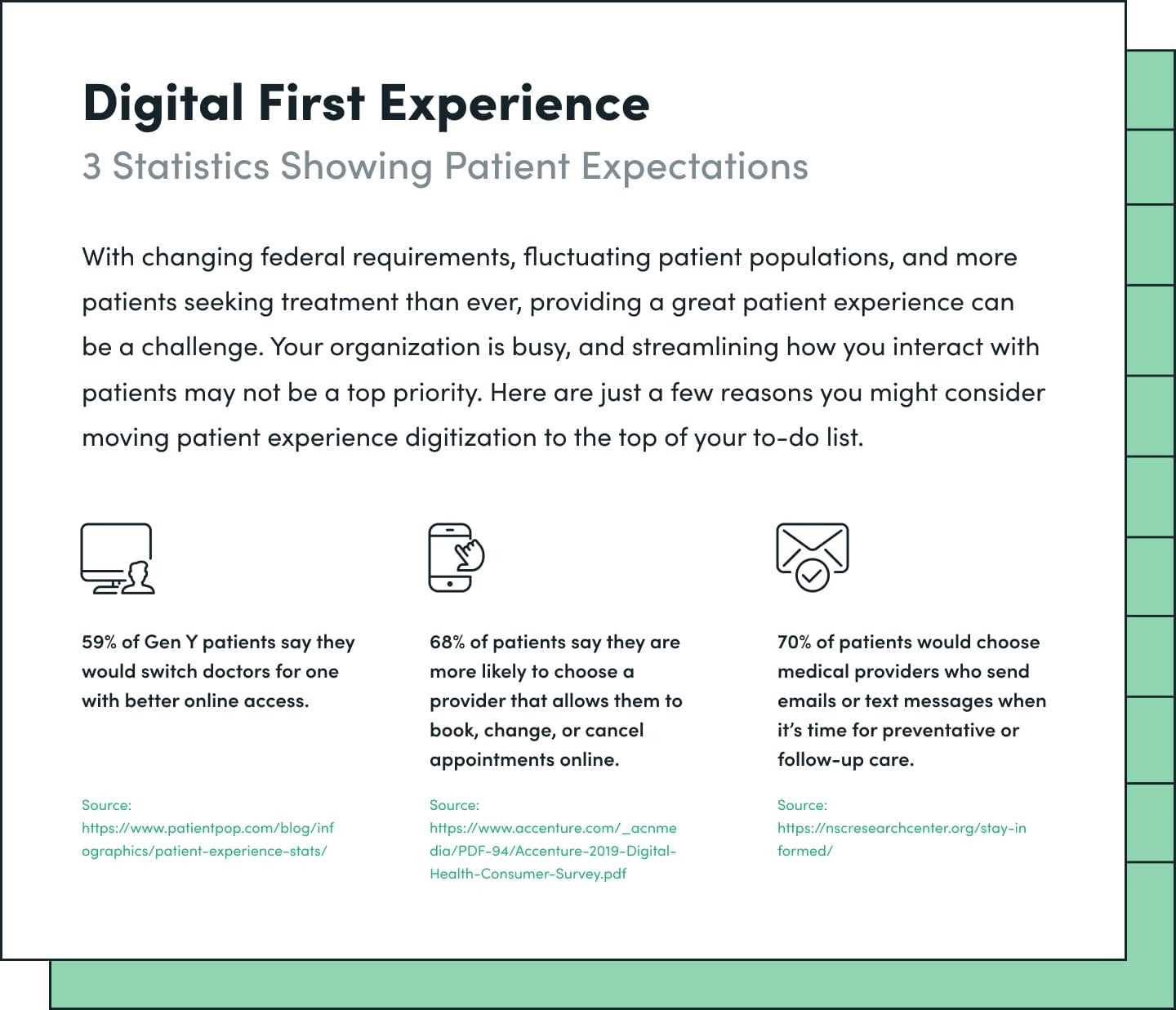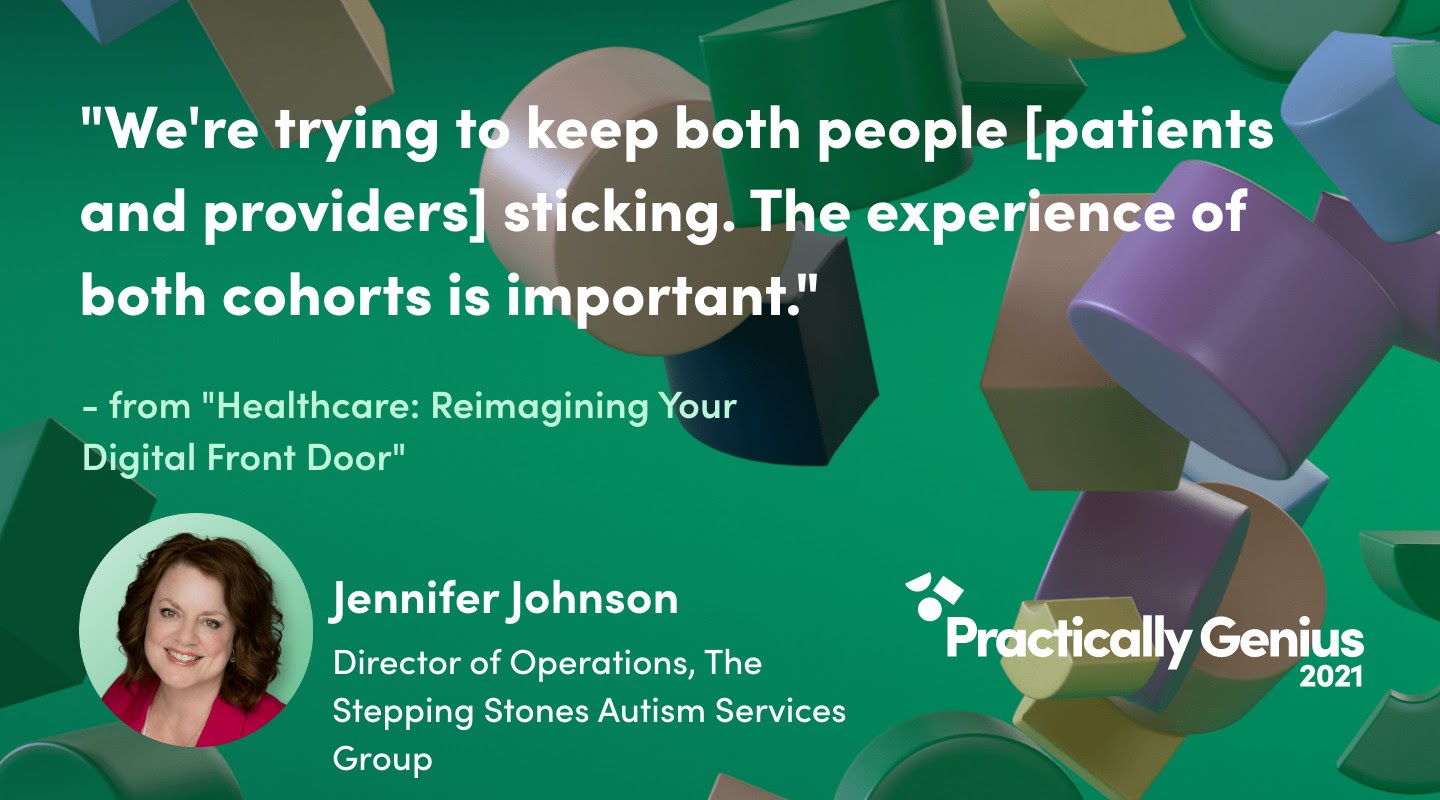The healthcare industry is undergoing a major transformation. From curbside check-ins and parking lot waiting rooms to telemedicine and virtual care, patients now expect consumer-like experiences. But many healthcare organizations have been slow to make the shift, and patient satisfaction has plummeted as a result. An alarming 81% of patients are dissatisfied with their healthcare experience.
To learn how healthcare organizations are tackling this problem, we hosted a panel discussion at Practically Genius 2021 called “Healthcare: Reimagining Your Digital Front Door.” In this session, industry experts discussed shifting patient expectations, how data and technology can be used to create exceptional patient experiences, and what the future looks like for healthcare post-pandemic.
Here are some of the top takeaways from the full panel discussion:

Old systems and processes need to go.
Now more than ever, healthcare providers need to be able to quickly adapt to our ever-evolving digital world. Patients now expect digital-first experiences, streamlined data access, and shorter wait times to see providers. As Arun Budhwani, Head of Patient Experience at Cortica Care, pointed out, “patients want frictionless experiences.” If your healthcare organization can’t keep up, you’ll see patient satisfaction rates steadily drop.

Whether you’re a large hospital system or a small medical office, your ultimate goal is to improve patient engagement, outcomes, and satisfaction. Curating a streamlined and positive patient experience starts with your internal processes, efficiencies, and tools. Are you still using paper or other outdated processes and systems to manage patients? If so, it’s time to update your tech stack with solutions that can help you automate workflows from start to finish.
Read More: 3 Healthcare Tech Stack Must-Haves
Personalization is paramount.
When you walk into a doctor’s office, how do you expect your experience to go? It’s likely that the last thing you want to do is fill out a stack of forms over and over again, especially if you’ve visited the office before. Yet many healthcare organizations are still using clunky, repetitive processes to collect and manage patient information. This has led to over 40% of patients not feeling loyalty to their health system.
Learn how Coastal Cloud transformed clunky processes into seamless workflows with Formstack.
According to Jennifer Johnson, Director of Operations at The Stepping Stones Autism Services Group, improving patient loyalty comes down to personalization. In addition to wanting experiences that are more streamlined, patients want to feel heard. This means that organizations need to not only look for opportunities to digitize patient touchpoints but also use the data they collect to create personalized, positive experiences.

Patient experience and operational efficiency go hand-in-hand.
Improving the patient experience doesn’t just have a positive effect on patient satisfaction. It also leads to improved efficiency for your organization and higher employee retention. As Jennifer Johnson stresses, “positions in healthcare are at a premium right now,” so it’s vital that healthcare organizations implement processes that reduce stress and help employees be more productive.
A great way to start this process is by asking staff to provide information on where pain points lie. Identifying where frustration and bottlenecks occur can give you a jumpstart on revamping outdated processes and reassessing existing systems—ultimately ensuring that employees have the resources they need to be successful and effectively meet patient expectations.

No-code is the future of healthcare.
The need for new systems, tools, and processes is clear. But what technology should you invest in? For many healthcare orgs, the answer is no-code tools. No-code tools include software, systems, or products that allow users to build a solution without needing to know any code. These tools enable non-technical workers, in any department, to create the processes, products, and tools they need to get work done—without needing support from IT.
This type of software provides you a visual arena to build your processes, usually with a drag-and-drop menu of options. From onboarding patients and collecting medical histories to generating patient invoices and accepting payments, no-code makes it extremely quick and easy to develop solutions to your most difficult problems.
Learn more about the impact of no-code in healthcare in our free guide.
As Arun Budhwani pointed out, “Having no-code solutions in place allows you to have more control and be more agile.” And Dr. Jonathan Spero, CEO of InHouse Physicians, agreed, emphasizing that no-code tools like Formstack make it easier to adapt to the ever-changing environment of healthcare, especially after the pandemic. “Over these last 18 months or so, it seems like the business environment changes every week. For me as a CEO, the agility factor of Formstack was music to my ears.”
We’ve only scratched the surface on the information our panelists shared during “Healthcare: Reimagining Your Digital Front Door.” Get more insights on the patient experience and the future of healthcare by watching the full panel at practicallygenius.com.











